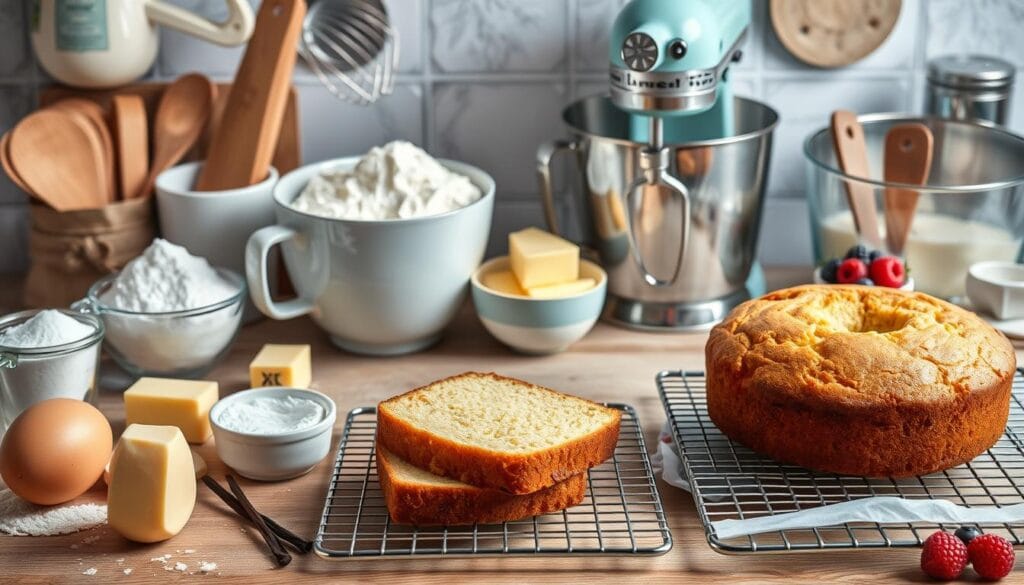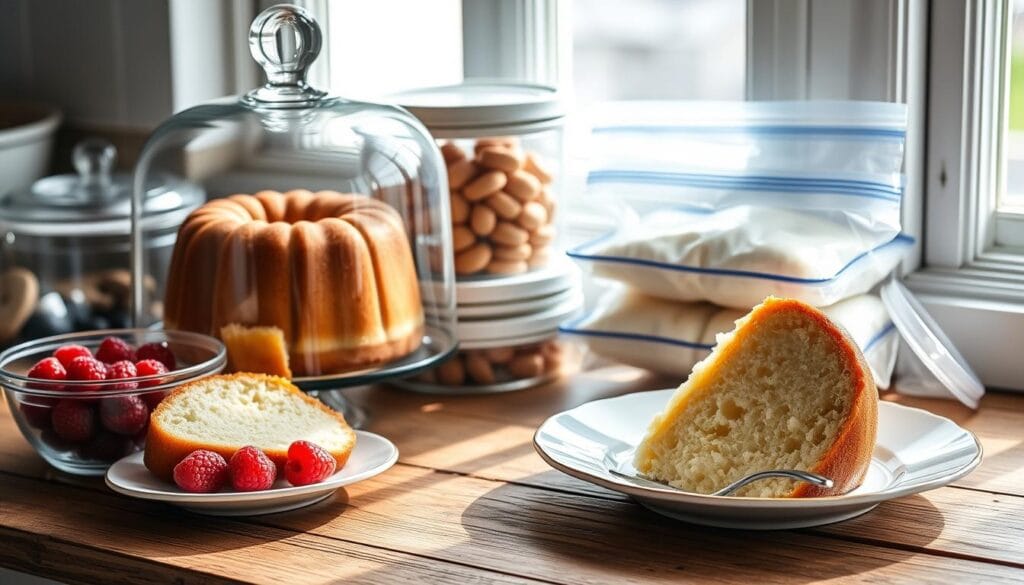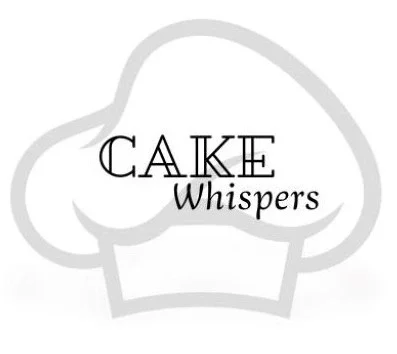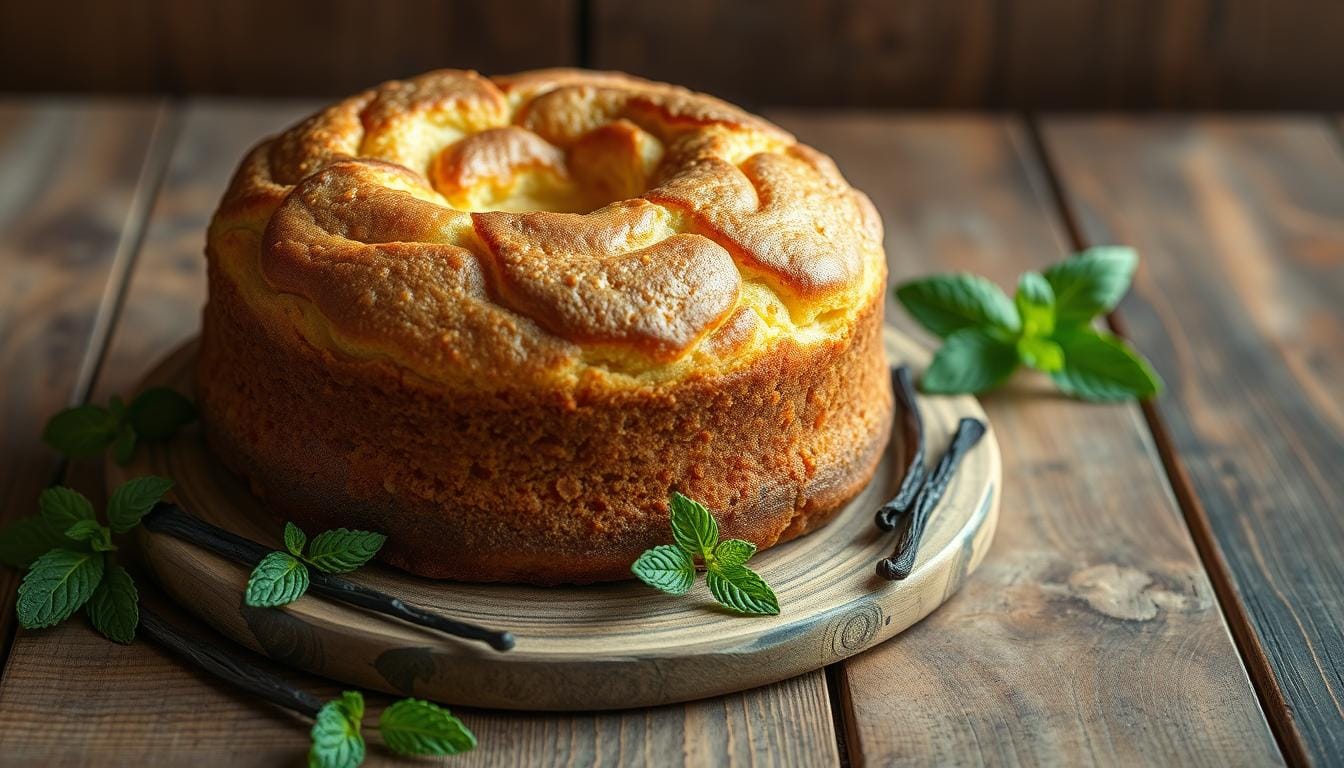Moist & Flavorful Vanilla Pound Cake Recipe
Every family has a special recipe that brings back memories of childhood. This homemade pound cake is our family’s secret to warmth and connection. The smell of vanilla and butter in the kitchen is more than just a treat—it’s about keeping traditions alive.
Our easy vanilla pound cake recipe turns simple ingredients into a masterpiece that touches your soul. It’s perfect for both beginners and experienced bakers. This vanilla pound cake recipe is guaranteed to make everyone want more.
Picture cutting into a slice of moist pound cake. Its golden outside gives way to a soft, rich inside. Each bite shares a story of love, care, and quality. Get ready to make a recipe that’s not just a dessert, but a cherished memory.
Table of Contents
The Perfect Traditional Pound Cake Introduction
Explore the rich history of the classic pound cake, a timeless treat loved by many. This recipe is more than a dessert; it’s a journey through American baking history.
Pound cake became a favorite American dessert, with roots in simple recipes. The best pound cake recipe uses equal parts of butter, sugar, eggs, and flour.
History of Classic Pound Cake
The classic pound cake started in Europe in the 1700s. Back then, home bakers relied on precise measurements. Its name comes from the recipe’s simple ratio: one pound each of butter, sugar, eggs, and flour.
“A slice of pound cake is like a slice of culinary history.” – Baking Enthusiast
Why This Recipe Works
- Simple, time-tested ingredient ratios
- Rich, dense texture
- Versatile serving options
- Minimal ingredients required
What Makes It Special
The magic of traditional pound cake is its simplicity. Unlike other desserts, it balances flavors without being too sweet.
| Ingredient | Purpose | Contribution |
|---|---|---|
| Butter | Fat Source | Provides richness and moisture |
| Sugar | Sweetener | Creates golden-brown crust |
| Eggs | Binding Agent | Adds structure and stability |
| Flour | Base | Provides cake structure |
Enjoyed with fresh berries or on its own, this best pound cake recipe offers a delightful experience. It connects you to generations of home bakers.
Essential Ingredients for Your Vanilla Pound Cake Recipe
Making the perfect vanilla pound cake begins with choosing top-notch ingredients. The original recipe called for equal parts of four main ingredients. Today, we have more flexibility but still keep that classic taste.
Your ingredients should include:
- Unsalted butter (room temperature)
- All-purpose flour
- Granulated sugar
- Large eggs
- Pure vanilla extract
- Salt
“The secret to an exceptional vanilla pound cake lies in the quality and temperature of your ingredients.”
The old recipe used a 1:1:1:1 ratio for ingredients. Now, we have more flexible measurements. Yet, we still keep the cake’s dense texture that everyone loves.
| Ingredient | Quantity | Purpose |
|---|---|---|
| Unsalted Butter | 1 cup | Provides richness and tender crumb |
| All-Purpose Flour | 2 cups | Creates cake structure |
| Granulated Sugar | 1 cup | Adds sweetness and aids in browning |
| Large Eggs | 4-5 | Binds ingredients, adds moisture |
Pro tip: Always use room temperature ingredients to ensure smooth mixing and consistent texture in your vanilla pound cake recipe.
Adding heavy cream or vanilla bean paste can make your cake even better. They add depth and complexity. The trick is to balance the flavors while keeping the cake’s signature taste.
Kitchen Tools and Equipment Needed
To make a delicious pound cake, you need the right tools and equipment. Choosing the right gear is key to making this classic dessert. Knowing which tools you need makes baking easier and more fun.
Creating the perfect pound cake starts with the right equipment. The quality of your tools greatly affects your dessert’s outcome.
Must-Have Baking Tools
- Digital kitchen scale for precise ingredient measurements
- Stand mixer or electric hand mixer
- Stainless steel mixing bowls
- Measuring cups and spoons
- Wire cooling rack
- Reliable pound cake pan
Optional but Helpful Equipment
- Sifter or fine mesh strainer for flour
- Pastry brush for greasing pans
- Offset spatula for smooth batter spreading
- Silicone baking mat
Pan Selection Guide
Choosing the right pound cake pan is key for the perfect texture and look. Light-colored metal pans help prevent over-browning and ensure even baking.
| Pan Type | Recommended Size | Best For |
|---|---|---|
| Loaf Pan | 8 1/2 × 4 1/2 inches | Classic pound cake shape |
| Bundt Pan | 12-cup capacity | Decorative design, even baking |
| Nordic Ware Pan | 9-10 cup capacity | Professional-grade baking |
“The right baking tools are your secret weapon in creating a perfect pound cake every time.” – Professional Baker
When picking your pound cake pan, make sure to grease and flour it well. This ensures easy cake release and a stunning presentation.
Preparing Your Ingredients: Room Temperature Matters
Baking the perfect pound cake begins with room temperature ingredients. Professional bakers know that the right temperature is key. It ensures a smooth batter and a tender, delicious cake.
“Room temperature ingredients are the secret weapon of successful bakers”
Let’s look at the important room temperature ingredients:
- Butter should be soft but not melted, leaving a gentle indentation when pressed
- Eggs work best when they’re no longer cold from the refrigerator
- Milk and cream blend more smoothly at room temperature
For the best results, remove ingredients from the fridge 30-45 minutes before mixing. This helps them reach the perfect temperature for mixing.
| Ingredient | Recommended Room Temperature Time | Ideal Texture |
|---|---|---|
| Butter | 30-45 minutes | Soft, slight indentation possible |
| Eggs | 20-30 minutes | No longer cold, room temp |
| Milk/Cream | 15-20 minutes | Slightly cool but not cold |
Pro tip: Never use melted butter or extremely warm ingredients, as this can negatively impact your pound cake’s texture and rise.
Step-by-Step Mixing Instructions
Making the perfect pound cake needs precision and care. It starts with mastering a few key techniques. These will boost your baking skills.
Proper Creaming Technique
The creaming method is key to a tasty pound cake. Begin by beating unsalted butter and granulated sugar together for 5 minutes. Aim for a light, fluffy mix that looks almost white and grows in volume.
- Use room temperature butter for best results
- Beat at medium-high speed
- Scrape down the bowl periodically
Adding Eggs Correctly
Eggs are vital in your pound cake. Add them one at a time, beating well after each addition – about 3 minutes per egg. This slow method ensures a smooth batter.
“Patience during egg addition ensures a velvety, consistent texture”
Flour Incorporation Method
The flour stage in making pound cake needs care. Add flour gradually, alternating with liquids like heavy cream. Start and end with flour, mixing on low speed until just combined.
Pro tip: Overmixing can lead to a tough, dense cake. Stop mixing once ingredients are just combined to keep the cake tender.
Mastering the Baking Process

Baking pound cake from scratch needs precision and care. The baking process is key to a delicious homemade dessert. Knowing the right techniques ensures a perfect pound cake every time.
Temperature and timing are vital when baking pound cake. Preheat your oven to 350°F (175°C) for even baking. Keeping the temperature steady is crucial.
“Baking is a science, and pound cake requires exact measurements and techniques.”
Baking Steps and Techniques
- Pour the batter into a prepared 9×5 inch loaf pan
- Smooth the top of the batter with a spatula
- Place the pan in the center of the preheated oven
- Avoid opening the oven door frequently
Pound cake usually bakes for 60 to 75 minutes. To stop over-browning, cover with foil if the top gets too dark.
Doneness Checking
- Use the toothpick method to test cake readiness
- Insert a toothpick into the center of the cake
- If it comes out clean or with a few moist crumbs, the cake is done
| Baking Parameter | Recommended Value |
|---|---|
| Oven Temperature | 350°F (175°C) |
| Baking Time | 60-75 minutes |
| Pan Size | 9×5 inches |
After baking, let your pound cake cool in the pan for 20-30 minutes. Then, transfer it to a wire rack. This keeps the cake moist and prevents it from breaking.
Testing for Doneness and Cooling Tips
Getting your pound cake just right involves two key steps: figuring out when it’s done and cooling it right. Knowing when your cake is ready can turn a dry, hard treat into a soft, delicious one.
The Reliable Toothpick Method
The toothpick test is your best tool for checking if your cake is done. Here’s how to use it:
- Insert a clean wooden toothpick into the cake’s center
- If it comes out clean or with just a few moist crumbs, your cake is done
- Wet batter on the toothpick means the cake needs more baking time
Proper Cooling Stages for Pound Cake
Cooling your pound cake right is an art that keeps it moist and prevents it from falling apart. Follow these important cooling tips:
- Let the cake rest in the pan for 15-20 minutes after baking
- Gently run a knife around the pan’s edges to loosen
- Carefully invert the cake onto a wire rack
- Allow complete cooling at room temperature
Pro tip: Cooling your pound cake away from drafts helps maintain its delicate structure and prevents sudden temperature changes that can cause cracking.
| Cooling Stage | Duration | Purpose |
|---|---|---|
| In-Pan Resting | 15-20 minutes | Allows initial structure setting |
| Rack Cooling | 60-90 minutes | Ensures complete temperature equalization |
Remember, patience during the cooling process is key to achieving a pound cake with the perfect texture and flavor.
Serving Suggestions and Variations
Your vanilla pound cake is perfect for many serving ideas. It can turn into a stunning dessert. You can choose simple or fancy ways to serve it.
Classic Serving Suggestions
- Dust with powdered sugar for a classic finish
- Top with fresh berries and whipped cream
- Serve with a scoop of vanilla ice cream
- Drizzle with homemade lemon curd
Want to try something new? Add these mix-ins and flavors to your cake:
- Citrus Twist: Add lemon or orange zest to the batter
- Nutty Crunch: Fold in chopped pecans or almonds
- Spice Infusion: Incorporate ground cinnamon or cardamom
For a fancy look, make a vanilla glaze. Mix powdered sugar, milk, and vanilla extract. Drizzle it over your cake for a restaurant-style presentation.
“A great pound cake is like a blank canvas – perfect for your culinary creativity!” – Baking Enthusiast
Turn leftover pound cake into a morning delight. Toast thin slices and spread with salted butter. It’s a quick and tasty breakfast.
| Serving Option | Preparation Time |
|---|---|
| Plain Slice | Instant |
| Berries & Cream | 5 minutes |
| Glazed Pound Cake | 10 minutes |
Remember, the possibilities are endless. Be creative and find your favorite way to serve it!
Storage and Freezing Guidelines
Keeping your homemade pound cake fresh is key. You can enjoy it soon or save it for later. Knowing how to store it right is crucial.

Room Temperature Storage
Enjoy your pound cake at room temperature for the best taste. Here’s how:
- Store it in an airtight container
- Keep it for up to 5 days at room temperature
- Cover it loosely with plastic wrap to avoid drying
- Place it in a cool, dry spot, away from sunlight
Freezing Instructions
Freezing your pound cake is a great way to keep it fresh longer. Follow these steps:
- Let the cake cool down completely before freezing
- Wrap it tightly in plastic wrap
- Add aluminum foil on top for extra protection
- Mark the wrapped cake with the freezing date
Pro tip: Pound cakes stay fresh for about three months in the freezer.
Thawing Methods
Thawing your frozen pound cake right is important. Here are two ways to do it:
- Refrigerator Method: Put the wrapped cake in the fridge overnight
- Counter Method: Let it thaw at room temperature for 3-4 hours
You can also freeze individual slices. Just wrap each one in plastic wrap and store in a freezer-safe container.
Troubleshooting Common Pound Cake Issues
Fixing pound cake problems can be tough for home bakers. Knowing the causes of common issues helps make a moist dessert every time.
Let’s look at the most common pound cake problems and how to fix them:
- Fallen Cake: Often caused by underbaking or incorrect ingredient temperatures
- Dense Texture: Typically results from overmixing or using cold ingredients
- Crusty Top: Usually occurs due to sugar caramelization
When fixing pound cake issues, keep these tips in mind:
- Use room temperature ingredients for optimal mixing
- Avoid overmixing the batter
- Carefully measure all ingredients
Pro tip: Always use an oven thermometer to ensure accurate baking temperatures!
Here are some specific techniques to fix pound cake:
| Issue | Solution |
|---|---|
| Quick Browning | Cover with aluminum foil halfway through baking |
| Uneven Baking | Place cake pan in oven center |
| Dry Texture | Add moisture-rich ingredients like sour cream |
Baking is a science. Store brands of sugar and butter can affect your cake’s texture. Finely ground sugar or butter with higher liquid fat can cause unexpected results.
Preventing pound cake problems involves using room temperature ingredients. Beat butter for 1-7 minutes until creamy. Also, carefully mix dry ingredients with liquids.
Expert Tips for the Perfect Pound Cake
Making the ultimate pound cake needs precision and expert advice. Professional bakers say mastering a few key techniques can turn a simple cake into a masterpiece. These tips will boost your baking skills, making your pound cake moist and delicious every time.
Essential Baking Techniques
- Bring all ingredients to room temperature before mixing
- Use an accurate oven thermometer to ensure proper baking temperature
- Measure ingredients precisely using kitchen scales
- Cream butter and sugar until light and fluffy
The secret to a perfect pound cake is in the details. Carefully greasing and flouring your pan prevents sticking and ensures a smooth release. When adding eggs, mix them one at a time, making sure to mix well between each addition.
“Baking is a science, and pound cake demands precision.” – Professional Pastry Chef
Moisture-Boosting Techniques
To keep your pound cake exceptionally moist, try these strategies:
- Add a small amount of sour cream or cream cheese to the batter
- Avoid overmixing when incorporating flour
- Use cake flour for a lighter, more delicate crumb
- Check doneness with a wooden toothpick
With these expert techniques, your pound cake will be a hit. Remember, practice makes perfect. Each time you bake, you get closer to making a dessert that will wow everyone.
Conclusion
Making a classic vanilla pound cake is more than just a recipe. It’s about creating a delicious tradition in your kitchen. Your homemade pound cake is a timeless dessert that connects generations with its rich, buttery flavor and simple elegance.
The art of baking this classic vanilla pound cake recipe is more than just ingredients. It’s about understanding technique, practicing patience, and enjoying the process. Each slice tells a story of culinary skill and love.
Whether you’re a beginner or an experienced baker, this recipe is special. You can dress up your pound cake with fresh berries, serve it with whipped cream, or enjoy it plain. Its versatility makes it a cherished recipe in your collection.
Baking is both a science and an art. With practice, your homemade pound cake will get better with each try. Embrace the journey, share your creations, and enjoy every delicious moment of your baking adventure.

